On most walks, you don’t bring a lot of technology with you. Perhaps you should pack a camera, a phone, an emergency signaling device, and a drone. While certain switchblade drones are useful to have with you when hiking, not all of them are suitable for trekking. We’ll discuss today’s topics: what to look for in a hiking drone, why you would want one, what you can do with it, and which drones are the best available for hiking.
What are Drones? How do Drones Work?
Usually, when we discuss drones, we’re referring to privately owned, remotely operated quadcopters. A drone pilot license, also known as Part 107, is required if you want to use your drone for commercial purposes. Many of the drones we’ll be suggesting are tiny enough to avoid FAA registration. Drones that weigh less than 250 grams (0.55 pounds), which are frequently rather tiny and readily packable, are exempt from registration requirements.
Although there isn’t a drone designed just for hiking, there are plenty of little drones that are excellent for the job. Nonetheless, a bigger drone could be required if you’re dealing with strong gusts and heights. You may purchase drones designed expressly to assist you in finding fish or even drop lines if your hiking excursion involves fishing!
Why Use a Drone For Hiking?
A drone may be a useful hiking companion since it has several advantages over merely being a flying device. Using a drone is the best method to document the breathtakingly beautiful scenery you come across. Drones with high-quality cameras can take breathtaking overhead photos and movies that you just can’t obtain on your own, whether you’re driving through verdant woods, climbing rocky mountain summits, or relaxing along tranquil lakeshores. Using your drone to record and distribute photos from your hike is a terrific idea.
In addition, if you’re a mountaineer or rock climber, a member of your party who isn’t actively climbing can operate the drone to record your ascent and capture your motions on the rock face. Since no one on the rock needs to use their hands to hold a camera, it’s one of the safest methods to take these pictures.
Security
Trailblazing is an additional application of drones for hiking. To investigate areas that may be difficult or practically impossible to get to on foot, a drone may scout ahead. This aptitude is very useful for locating hiking paths and spotting potential hazards. A drone can assist you in identifying the path of least resistance during bushwhacking and ensuring that you don’t encounter any obstacles that are too risky to go through. By enhancing safety throughout your hike, drones help you get the most out of your outdoor experiences.
While ski touring, we at hikingandfishing.com frequently utilize our drone to scan descents, challenges, and zones. This significantly improves mobility and safety in the mountains.
Animals
Observing wildlife is also another excellent reason to go drone trekking. With camera-equipped drones, you can quietly study and record the local wildlife without upsetting the animals or getting too close. It’s a fantastic method to watch creatures that may harm you, like bison or bears, or animals that are easily startled, like deer. With this unusual viewpoint, you may get a close-up look at the natural world and film wildlife activity without frightening or upsetting the animals.
Rescue Missions
For several search and rescue missions, drones are also essential. They can swiftly cover wide regions and offer vital airborne perspectives. For example, drones fitted with thermal imaging cameras can assist in finding hikers who have been lost or people who are in need, even in difficult circumstances like poor vision or uneven terrain. In dire circumstances, this talent can facilitate rescue operations and raise the likelihood of a successful conclusion. Drones can help keep you safe if you want to explore potentially hazardous areas, such as the avalanche region.
While trekking might benefit from drones, it’s crucial to pick the proper one. You must take into account things like mobility, battery life, the caliber of the camera, and compliance with regional laws. A hiking drone may enhance your outdoor experiences and provide you with enduring memories of the natural beauty you come across when handled sensibly and morally.
Rules and permissions
Check the local laws in the hiking region you intend to visit regarding the use of drones. Drone flights may be prohibited in some locations or subject to permission requirements. Make sure you abide by all applicable laws; not only must drones be registered, but many other nations, including Canada, also demand pilot licenses for drones weighing 250 grams or more. You can check where you may and cannot fly your drone by visiting Drone-Made’s interactive map of worldwide drone rules.
It should be noted that flying a drone above 400 feet above ground level is prohibited in the United States. Certain drones are equipped with geofence technologies that keep you from inadvertently flying too high or into forbidden areas of the sky. Geofence systems offer an additional layer of security if you hike frequently in the vicinity of government buildings.
How High can Drones fly? Significant US drone laws
- It is forbidden to fly drones in wilderness regions.
- It is forbidden to fly drones in national parks.
- Airport airspace is limited.
- Drones are not permitted to be flown within one hour of a professional athletic event or within one hour of its conclusion.
- Drones are permitted on the majority of BLM or national forest land.
- You can learn about a number of drone rules on the FAA website.
Features of a Drone for Hiking
When selecting a hiking drone, several factors need to be taken into account. Choosing a drone might be difficult since there are a number of inexpensive, subpar drones on the market with alluring price tags and unclear listings. However, spending a little more money on a sturdy drone that will survive for more than a few flights is worthwhile. These are the main factors to look for when choosing a drone model to bring hiking: these indicate if a drone is suitable for wilderness use.
Dimensions and handling
Choose a drone that is easy to transport in your hiking backpack—one that is small and light. Due to their mobility, foldable or collapsible drones are frequently chosen. Going under 250 grams adds very minimal weight to your bag, which is why we highly suggest it. It is important to note that drones of this size are not designed to operate at elevations higher than 12,000 feet or in gusts faster than 20 mph.
Life of a Battery
A longer flying duration enables you to film more and cover more ground. Seek out drones that can hold extra batteries or have longer battery lives. Remember that standby modes can last considerably longer than battery life. You can always fly back, change the battery, and continue flying. Alternatively, you can use a portable power station to recharge your battery. In my opinion, provided you carry an additional battery or two, any flying duration of around 25 minutes is sufficient for practically all applications.
Camera Caliber
High-resolution picture and video capture requires a high-quality camera. Select a drone equipped with a camera that suits your demands for both photography and cinematography. Gimbal stabilization is one feature that can help guarantee steady video. Seek out a drone camera with a big sensor—larger sensors produce higher-quality images than higher resolutions. Capturing quality photographs is considerably simpler with a larger sensor since it lets in more light.
Several requirements to consider are:
- 30 frames per second is the minimum for 4K footage to achieve excellent cinematography.
- 1080 at 120 frames per second provides the ability to shoot slow-motion video.
- f/1.7 is a low aperture for photographing in low light.
- Three-axis gimbal for support
The Signal’s Strength and Range
For safe drone operation in isolated hiking areas, you’ll need a larger control range and a robust signal connection. Make sure the drone and controller can maintain a steady connection!
Most high-end drones have a range of at least five kilometers, but we want 3.1 miles. Remember that these are distinct line-of-sight ranges and that mountains and trees may have a significant impact on signal strength when hiking.
GPS and guided touring
Flying your drone may be made simpler and safer with built-in GPS and advanced navigation technologies like object avoidance sensors. These characteristics guarantee accurate placement and lessen the chance of accidents.
To avoid drone accidents, a return-to-home feature is necessary. The integrated GPS system is necessary for this function.
Modes of Flight and Automation
Seek out drones that include intelligent flight modes, such as waypoints, return-to-home, follow-me, and pre-programmed courses. These tools might make flying easier for you and assist you in getting the desired photos.
Cost
Given the vast range of pricing points for drones, think about your needs and priorities in terms of features. Take into account the quality and features you’ll need for your hiking excursions while weighing the price. Purchase the least-cost drone with the most features if you’re a complete novice. Instead, go with a dependable entry-level model that emphasizes quality and usability. Once you’ve learned the fundamentals of flying, you may always level up and purchase a drone with extra capabilities if you enjoy trekking with a drone.
Sturdiness and Resistance to Weather
The drone should be sturdy and able to survive a range of weather conditions, such as wind and light rain, because you’ll be flying it outside. Remember that very few drones that are sold commercially can fly in severe weather conditions. You will also need to forgo tiny size and light weight in favor of motors that have more control if you want high wind performance.
Drones use the Beaufort scale to describe their wind resistance. Generally speaking, the wind speed should be two-thirds or less of the drone’s maximum speed to guarantee safe flying. Therefore, it is recommended against flying a drone at wind speeds higher than 12 mph if it has a maximum speed limit of 18 mph. Certain drones, nevertheless, are designed to withstand stronger winds. To find out the wind speed your drone can safely manage, check its wind resistance number.
Comfortable to Use
Select a drone based on your degree of experience. While some drones have simpler controls for novice users, others have more sophisticated functionality for people with greater experience.
To be sure the drone will work for you, we strongly advise you to watch tutorials explaining how to use and control it before making a purchase.
Avoidance of Obstacles
Hiking places you in difficult terrain, as does your drone. You need a drone with an avoidance system in order to navigate across rocky terrain, deep woods, and other obstacles. Obstacle avoidance technology, which makes use of sensors and intelligent algorithms, enables real-time obstacle detection and navigation during flight.
When flying, exercise caution, even with obstacle avoidance technology. When on a hike, choose wide spaces free of obstructions to guarantee a more secure and seamless airborne experience. By taking preventative measures, you may reduce the likelihood of mishaps and improve drone safety in general while on your outdoor excursion.
Top 6 Drones for Hiking
What are the greatest drones for hiking now that you know what to look for? These are our best picks based on battery life, size, weight, and other crucial factors.
1. FIMI X8 SE V2
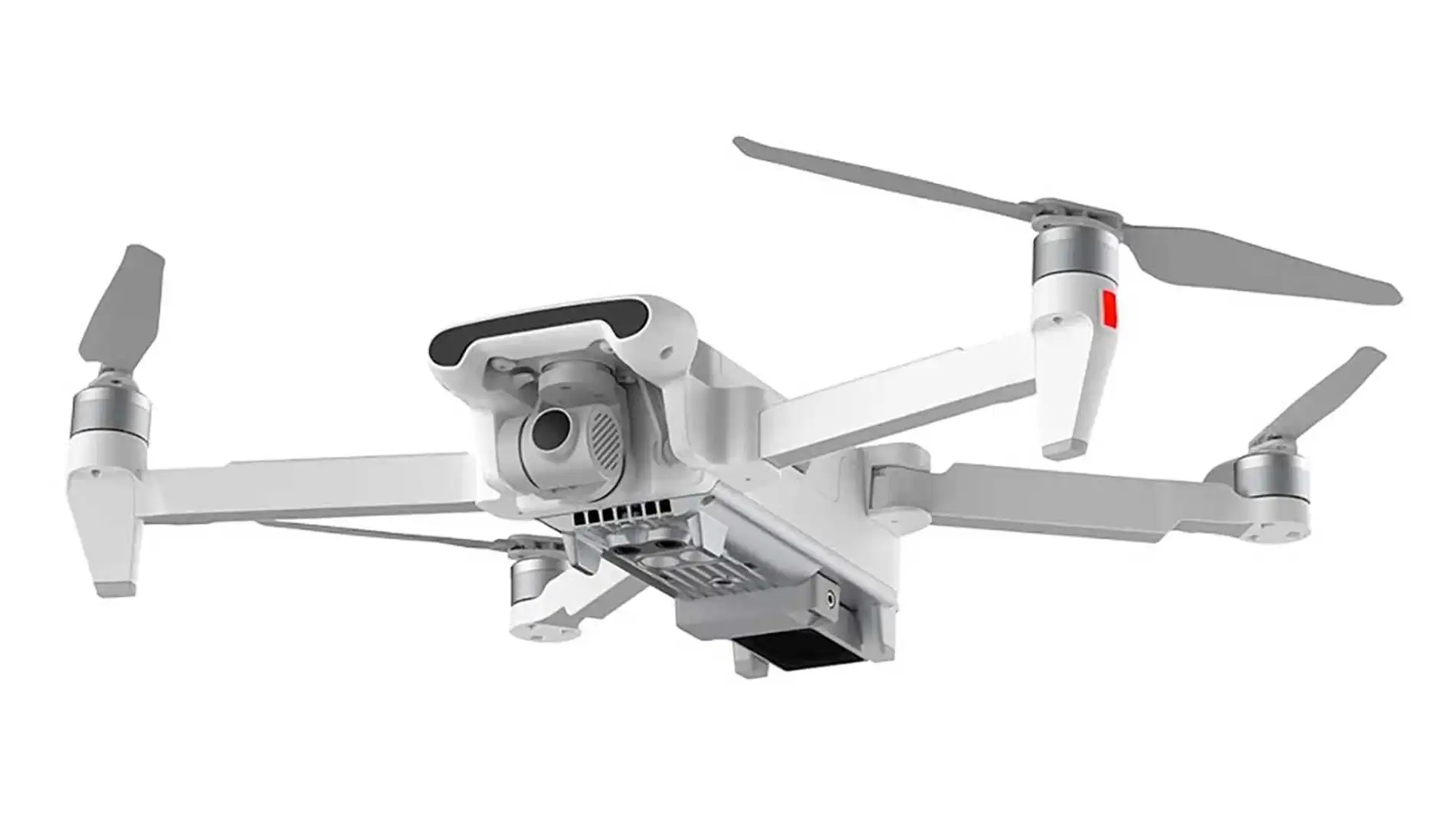
The FIMI X8 SE V2, a hiking drone model that is also reasonably priced, offers several characteristics that make it an excellent choice for trekking. Its sturdy chassis makes it more resistant to wind and snow than many other drones, and its Level 8 wind resistance allows it to remain steady in gusts as high as 46 mph. This drone is ideal for any future search and rescue efforts because it comes with a megaphone version and can be outfitted with an airdrop system that can drop food, a life preserver, and other goods. This drone does have one significant drawback, though: it cannot avoid obstacles. This implies that before operating this drone, you should have some prior drone-flying expertise.
This drone has very strong wind resistance and some really amazing camera specks. All things considered, this drone’s qualities make it quite competitive.
All things considered, this drone’s specifications are amazing for the price range. Compared to DJI drones, it has had significantly less acceptance and usage, making it difficult to assess how well it meets requirements. On paper, this is a really good deal. In actuality, the reviews also provide excellent outcomes. This is a wonderful alternative if you are ready to take a chance on a drone that is far less popular.
FIMI X8 SE V2 Features
Additionally, FIMI offers an ultralight series with characteristics that are quite similar to the DJI Micro 2, but again, there isn’t enough usage for us to declare with confidence that this operates on par.
- Mass: 771 grams
- Is registration required? Yes,
- Important features include a big sensor, strong flight duration, 3-axis gimbal stabilization, and the ability to
- broadcast aerial footage live from your smartphone or tablet via an app.
- Cons: not able to dodge obstacles; heavy.
- 35 minutes of battery life
- Cost: $579
2. Autel Robotics EVO Lite+
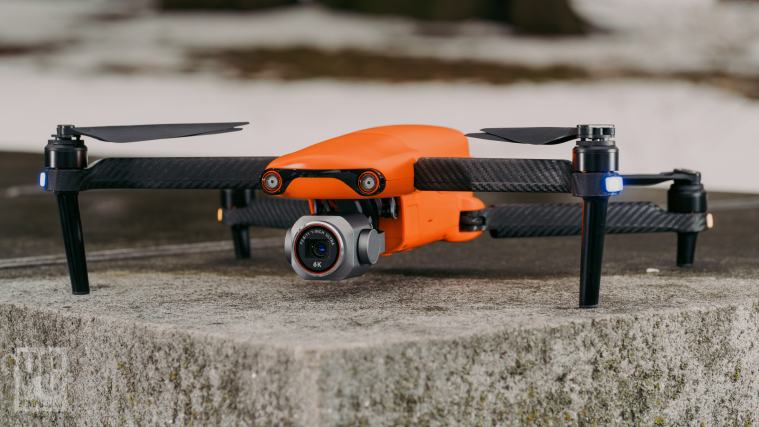
The EVO Lite+, one of the greatest drones available for photographers and filmmakers, is a powerful machine that can take sharp, detailed pictures even at night because of Autel’s sophisticated moonlight algorithm. The camera boasts a massive 150-degree wide-angle front field of view and an adjustable aperture.
The most enthusiastic drone users have written evaluations that are full of praise for the Autel’s superb image sensor and camera system. When it comes to usability and agility while in flight, the DJI rival products often excel. Having said that, this might be a fantastic choice for you if you’re searching for the ideal camera arrangement. We would suggest using this as your second or third drone instead of your first.
Autel Robotics EVO Lite+ Features
This excellent social media post emphasizes the quality of the image.
- Mass: 1,200 grams
- Is registration required? Yes,
- A large picture sensor, 7.4-mile range, GPS, automatic home return when the battery gets low, a lack of geofence, and three-axis gimbal stabilization are some of its key features.
- Cons: heavier than most drones for trekking.
- Life of Battery: 40 minutes
- Cost: $999–$1399
3. DJI Mavic 3
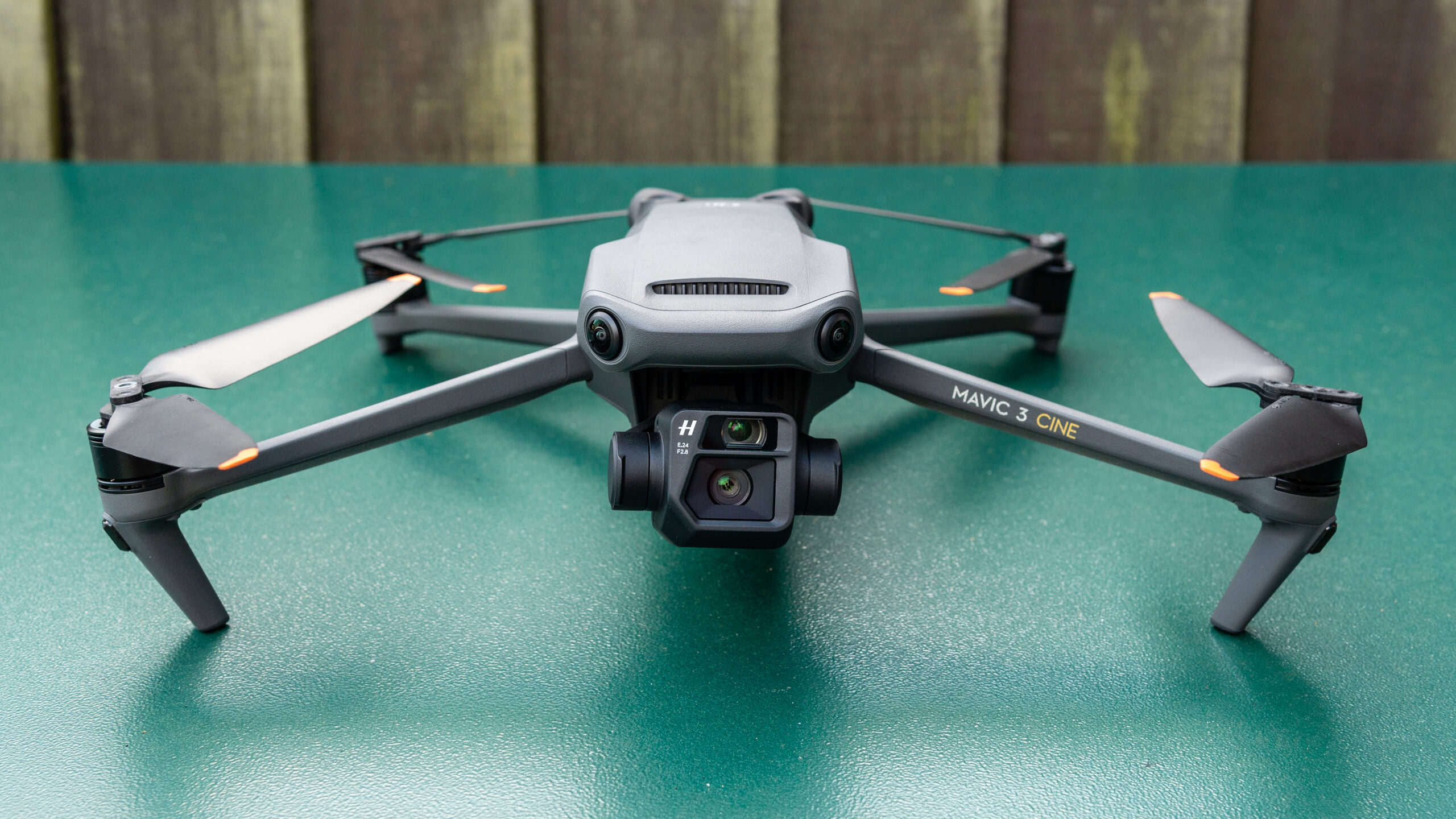
If you desire excellent footage of your hiking adventures, this drone is perfect for you. It sports a special dual-Hasselblad camera configuration with a hybrid zoom lens and a wide-angle lens. It has the finest safety features in its class, amazing color and low-light performance, and may be the best drone available for combining portability, quality of image, and ease of operation.
DJI Mavic 3 Features
- Mass: 899 grams
- Is registration required? Yes,
- Key Features: 3-axis gimbal stabilization, large sensor, obstacle avoidance, long battery life, and excellent cinematic quality.
- Cons: Too costly for individuals without professional use cases
- 46 minutes of battery life
- Cost: $1,749
4. DJI Mini 3 or Mini 3 Pro
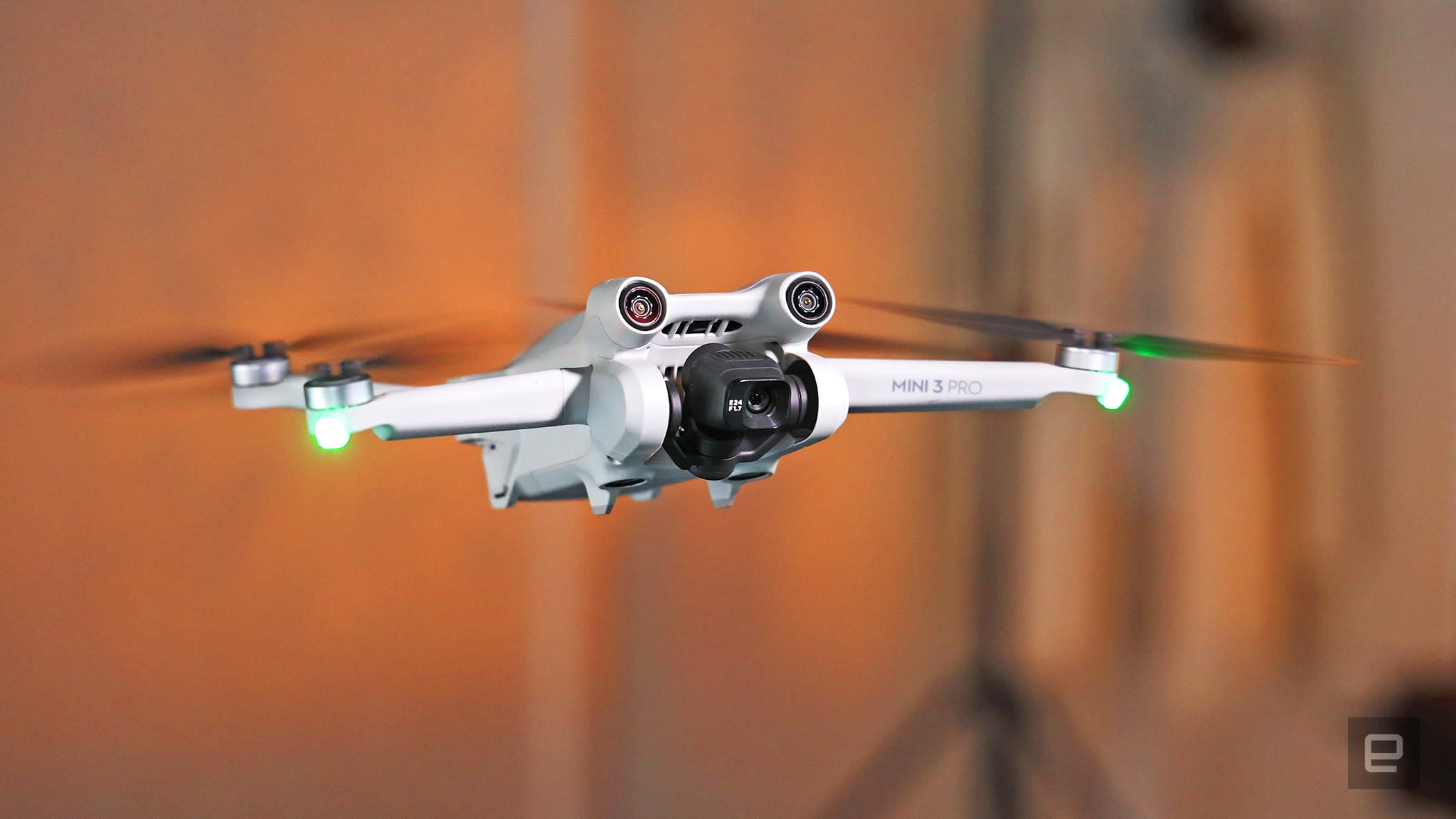
All of the functionality of much bigger drones is present in this little, palm-sized drone. Even as the light starts to fade, it’s ideal for photos and videos. Even for novices, it’s a delight to fly with excellent obstacle avoidance.
Better obstacle avoidance and improved camera and video quality are features of the Pro Edition. We picked the non-pro version for our first professional-style drone, and it may be the greatest entry-level model available.
We strongly advise adding the RC remote add-on. Even though it increases the weight in the pack, it improves flying safety and quality and makes for more creative photos.
DJI Mini 3 or Mini 3 Pro Features
Here are some videos that we produced using this drone.
- Quantity: 249 grams
- Is registration required? No.
- Principal attributes: broad sensor, obstacle detection, 4K recording, dimly lit camera, and three-axis gimbal stabilization.
- Cons: Although it may be purchased separately, make sure you purchase the version that includes the controller. A price tag in the $750 range indicates the drone version without a controller.
- Maximum 34 minutes (or 47 minutes with a Plus battery) of battery life
- Cost: $909 and above, based on features
5. DJI Mini 2SE
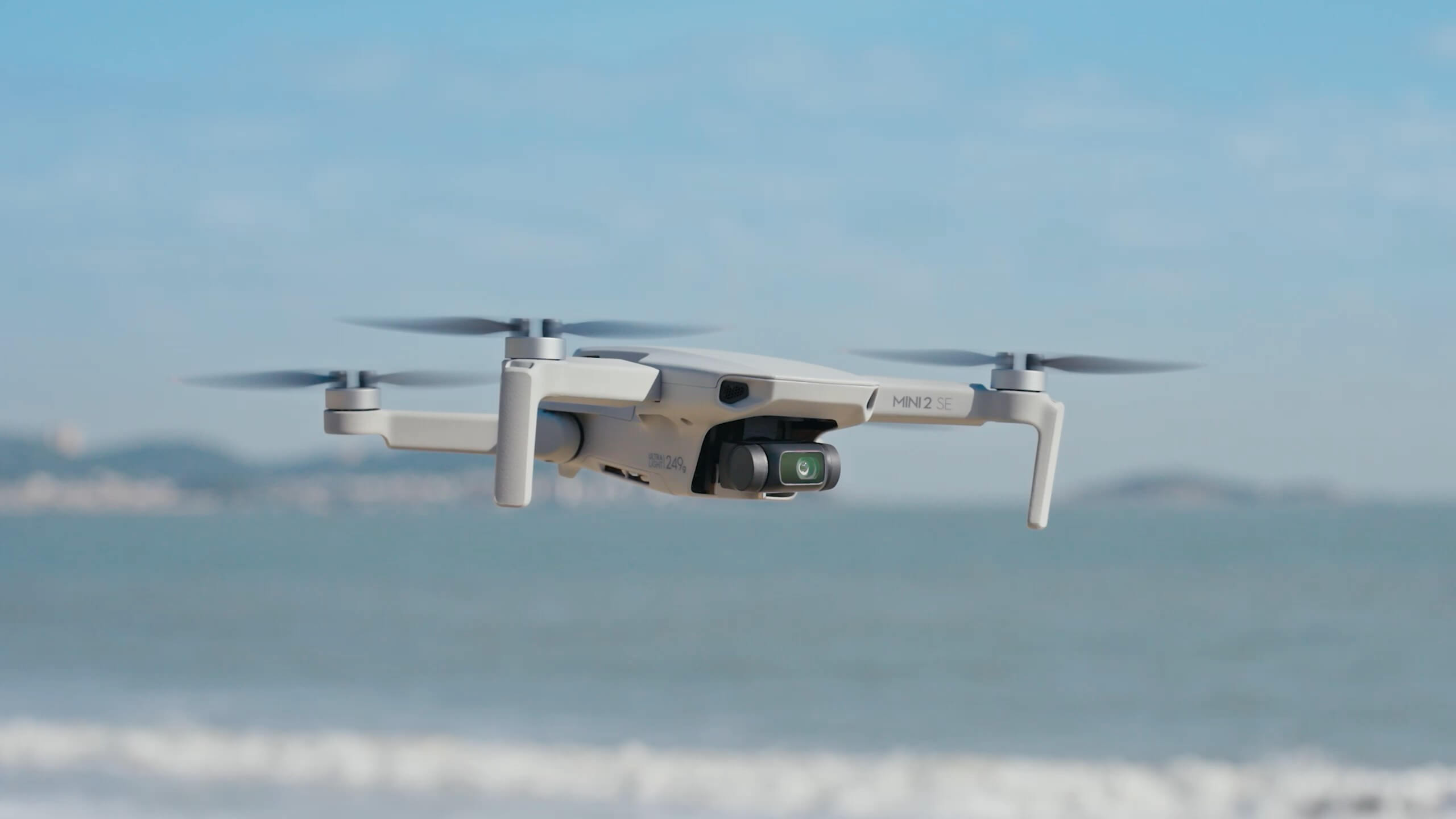
The DJI Mini 2 SE, the finest low-cost alternative on our list, has all the features of a DJI drone at a lower cost. Because of its all-in-one picture editor and easy settings, it’s ideal for novices. It’s a simple drone to learn on and won’t grow on you rapidly; most beginning to intermediate enthusiasts will find the lovely, sharp photographs it produces sufficient.
DJI Mini 2SE Features
This is a fantastic, affordable choice if all you want to do is try your hand at drone photography or filming. We advise going with the Mini 3 or Mini 3 Pro if you want a higher-quality camera because they are more comparable to the Mini 3. But this is a fantastic choice for a beginner drone.
- Quantity: 249 grams
- Is registration required? No.
- Key Features: simple-to-use app for taking and editing photos; wind stabilization up to 24 mph; beginner-friendly
- Cons: less flexibility over in-app picture editing, shorter battery life than other drones on our list, and a lower-
- quality camera.
- 31 minutes of battery life
- Cost: $339
6. Autel Robotics Evo Nano+
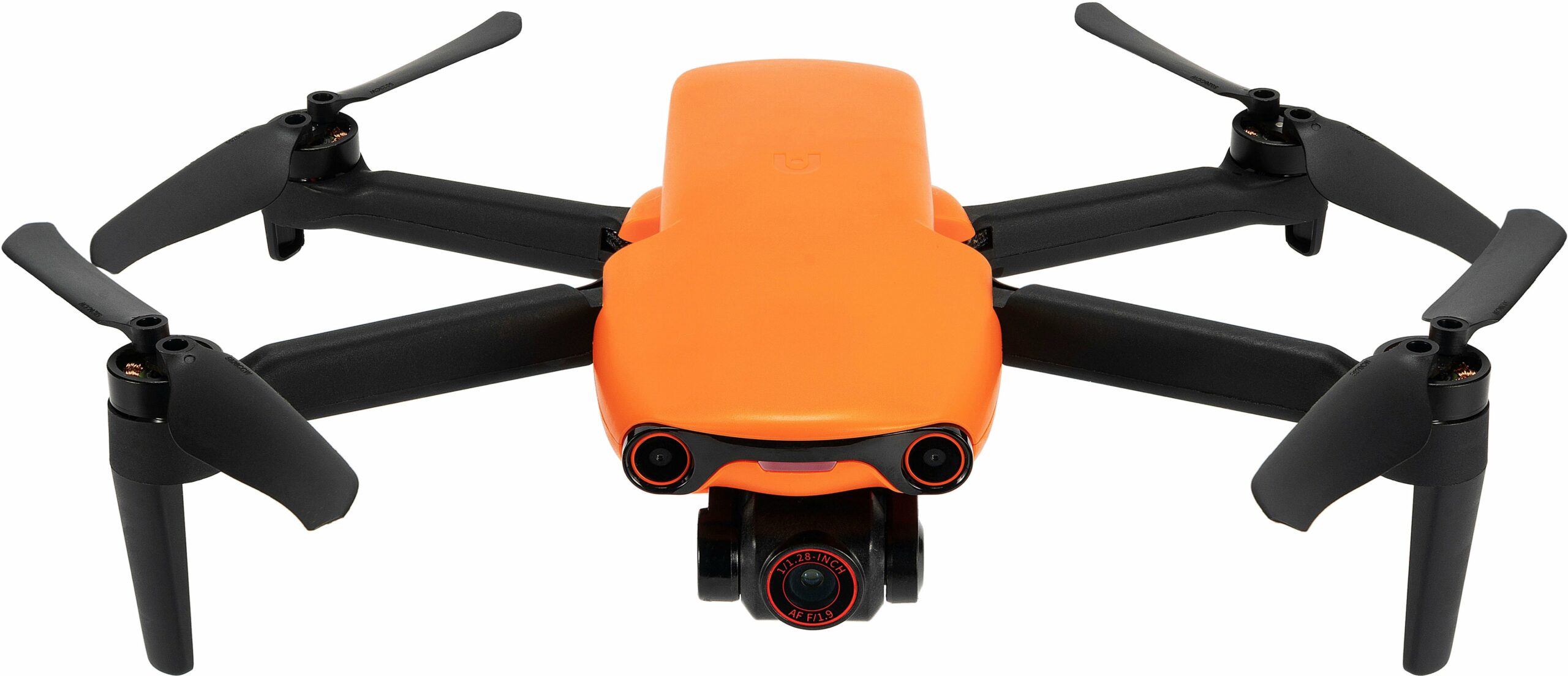
This is another excellent little drone for trekking, around the same size as the DJI Mini 3. It has a limited flying time, but you can bring along a couple spare batteries because changing them is simple. It seems from reading a lot of reviews that in windy conditions, the DJI Mini 3 outperforms this drone.
It outperforms the DJI Mini 3 (non-pro version) in terms of tracking and obstacle avoidance. You get a few more features at the same price range, but the flying performance is reduced.
Autel Robotics Evo Nano+ Features
There’s a cost involved. Although we would choose the DJI Small above the EVO Nano in this price range, this is still a fantastic choice if you want to stay away from DJI for any reason.
- Quantity: 249 grams
- Is registration required? No.
- Key Features: 3-axis gimbal stabilization, compact, robust, excellent obstacle avoidance, and a superb sensor for low-light photography and video.
- Cons: shorter battery life than other similar drones; difficult to edit photos; some customers think the video
- seems overprocessed.
- Life of Battery: 28 minutes
- Cost: $729

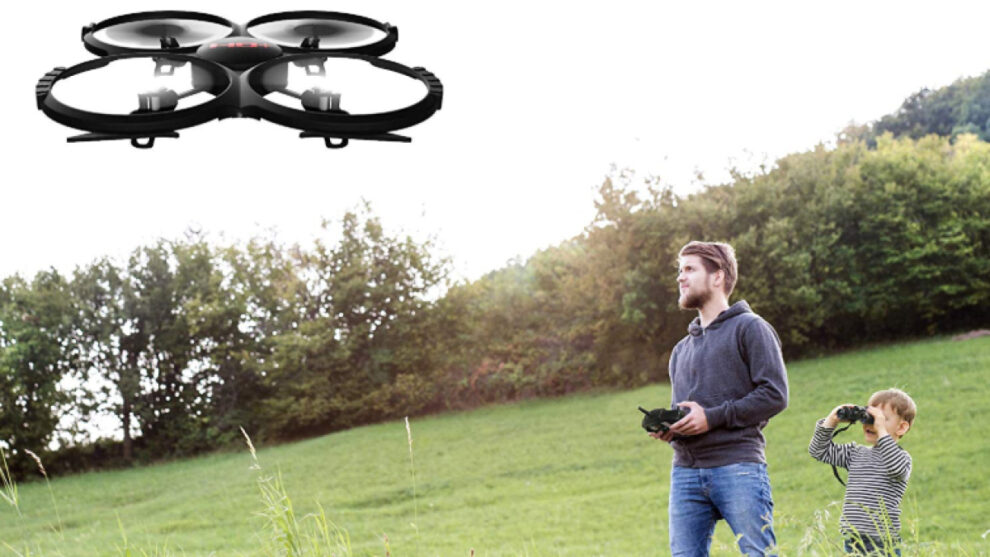








Add Comment